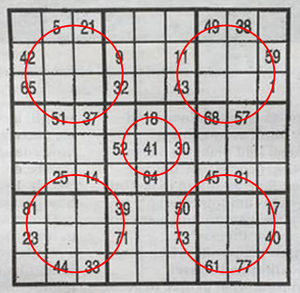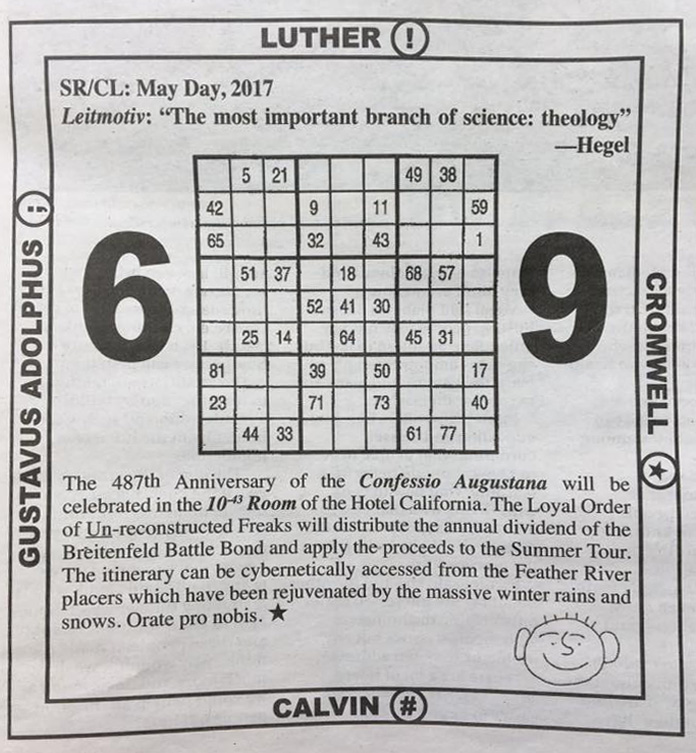5/1/17
| MAY DAY 2017 | |
| Publication Date | May 1, 2017 |
|---|---|
| Smiley Type | Smiley with 6 hairs |
Ad Transcript
SR/CL: May Day, 2017 Leitmotiv: "The most important branch of science: theology"—Hegel
6
| 5 | 21 | 49 | 38 | |||||
| 42 | 9 | 11 | 59 | |||||
| 65 | 32 | 43 | 1 | |||||
| 51 | 37 | 18 | 68 | 57 | ||||
| 52 | 41 | 30 | ||||||
| 25 | 14 | 64 | 45 | 31 | ||||
| 81 | 39 | 50 | 17 | |||||
| 23 | 71 | 73 | 40 | |||||
| 44 | 33 | 61 | 77 |
9
The 487th Anniversary of the Confessio Augustana will be celebrated in the 10-43 Room of the Hotel California. The Loyal Order of Un-reconstructed Freaks will distribute the annual dividend of the Breitenfeld Battle Bond and apply the proceeds to the Summer Tour. The itinerary can be cybernetically accessed from the Feather River placers which have been rejuvenated by the massive winter rains and snows. Orate pro nobis. ★
Ad Border
Two solid black borders with the following inscriptions:
- Top: Luther Exclamation Point (!)
- Left: Gustavus Adolphus Semicolon (;)
- Right: Cromwell Star Symbol (★)
- Bottom: Calvin Pound Sign (#)
Ad Artwork
The center of the ad is a large grid, laid out in a similar fashion to a sudoku grid. There are nine squares of nine cells each.
The numbers 6 and 9 are placed to the left and right of the grid. 6 and 9 have rotational (radial) symmetry of 180°. The grid itself also has several elements of rotational symmetry.
The shapes formed by the numbers are horizontally, vertically, and rotationally symmetrical:
At first glance, the numbers in the grid do not display any symmetry in value, but the relationships between the numbers do display rotational symmetry. When rotated 180°, the value differences between adjacent cells remain the same.
Ad Image
Leitmotiv
"The most important branch of science: theology"—Hegel
This quote is not directly attributable to Hegel, however the sentiment is expressed in his lectures on the history of philosophy.
From the time of Charles the Great it was only in two places — in the great schools attached to the great cathedral churches and monasteries — that a cleric, that is a canon who had the oversight of the instructors (informatores), was called scholasticus; he likewise gave lectures on the most important branch of science, theology.


